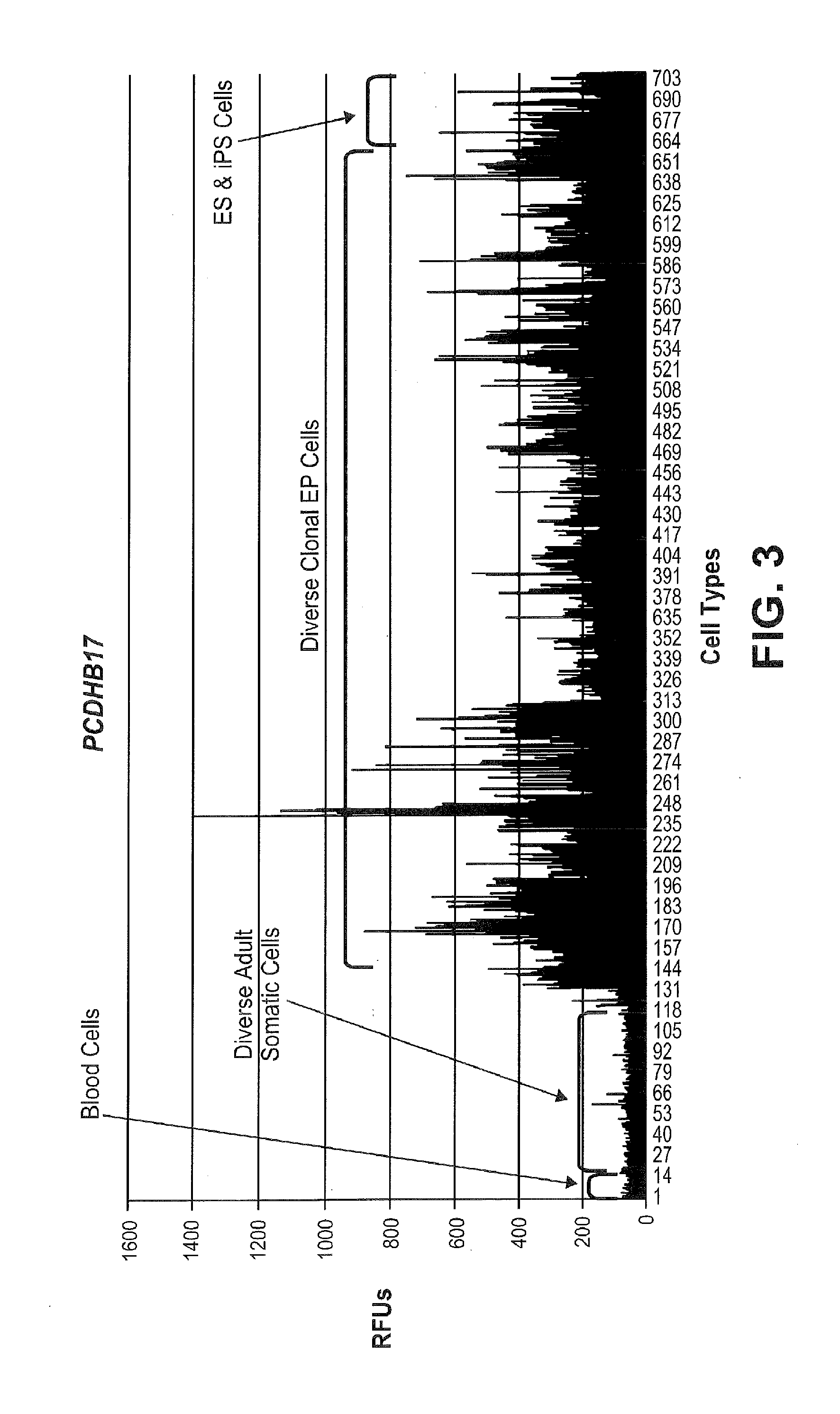Compositions and methods for induced tissue regeneration in mammalian species
a technology of tissue regeneration and mammalian species, which is applied in the field of tissue regeneration and the reprogramming of somatic cells, can solve the problems of ineffective administration of exogenous cells
- Summary
- Abstract
- Description
- Claims
- Application Information
AI Technical Summary
Benefits of technology
Problems solved by technology
Method used
Image
Examples
example 1
Identification of iTR Genes by Comparing Gene Expression in hES, iPS, and Clonal EP Cell Lines to Diverse Fetal and Adult-Derived Somatic Cell Types
[0236]Illumina gene expression microarray analysis was performed in diverse adult and embryonic cell types including 14 diverse blood cell types, 115 diverse fetal and adult-derived somatic cell types from all three germ layers, 545 diverse clonal hES-derived and iPS-derived EP cell lines, 12 hES cell lines and 17 human iPS cell lines. The average RFU values for each probe in the fetal / adult-derived cells was compared to the corresponding average in the clonal EP cell lines and probes with relatively uniformly higher expression in one of the two sets were identified. As shown in FIG. 1, and FIGS. 2-15, these genes represent factors with known roles in oxidative phosphorylation (COX7A1), transcription factors with as SIX / and DLX1, and other diverse activities within the cell. RFU values below a value of 100 are considered background sign...
example 2
[0237]Modification of iTR genes in transgenic mice and assays for iTR in adult animals. The embryonic patterns of expression of the genes: CAT, COMT, COX7A1, DLX1, DRD1IP, LOC205251 NAALADL1, PCDHB2, PCDHB17, Primary neuroblastoma cDNA, clone:Nbla10527, RAB3IP, SIX1, TRIM4, and ZNF280D are induced individually or in combination to document their effects on increasing tissue regeneration in incised ear lobes and other somatic tissues.
example 3
[0238]In vitro assay of human stromal tissue regeneration through modulation of iTR genes. The regenerative potential of up-regulating iTR inducing genes or down-regulating iTR inhibitory genes can be assayed using the in vitro wound repair assay described herein. In brief, a scratch test was utilized as described (Nature Protocols 2, 329-333 (2007) Liang C C et al “In vitro scratch assay: a convenient and inexpensive method for analysis of cell migration in vitro”). The assay utilized neonatal human foreskin fibroblasts (Xgene Corp, Sausalito Calif.) that expressed COX7A1 at levels comparable to other fetal and adult-derived stromal cells described herein. Fibroblasts were grown to confluence using DMEM medium supplemented with 10% FBS cultured in 6 well plates previously coated with 0.1% gelatin then cultured in a humidified incubator with 5% O2 and 10% CO2.
[0239]The reagents below were used on day 0 to alter the expression of the iTR inhibitory gene COX7A1:[0240]SMARTpool: ON-TAR...
PUM
| Property | Measurement | Unit |
|---|---|---|
| mass | aaaaa | aaaaa |
| mass | aaaaa | aaaaa |
| mass | aaaaa | aaaaa |
Abstract
Description
Claims
Application Information
 Login to View More
Login to View More - R&D Engineer
- R&D Manager
- IP Professional
- Industry Leading Data Capabilities
- Powerful AI technology
- Patent DNA Extraction
Browse by: Latest US Patents, China's latest patents, Technical Efficacy Thesaurus, Application Domain, Technology Topic, Popular Technical Reports.
© 2024 PatSnap. All rights reserved.Legal|Privacy policy|Modern Slavery Act Transparency Statement|Sitemap|About US| Contact US: help@patsnap.com










